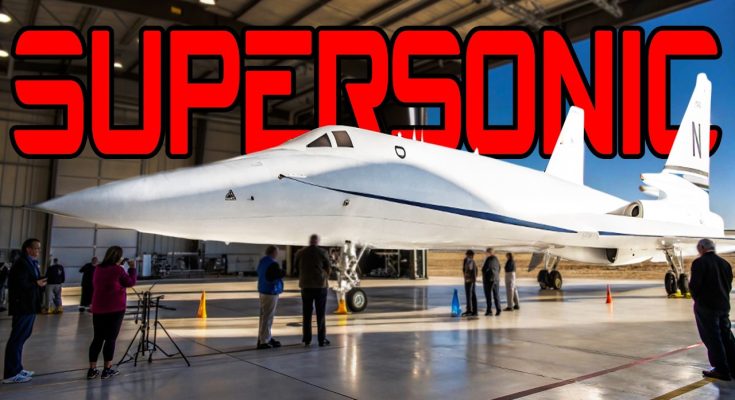XB-1 Breaks the Sound Barrier: A Historic Flight at Mach 1.122
In a historic achievement for aviation, the XB-1 Supersonic Jet, developed by Boom Supersonic, has broken the sound barrier, reaching an impressive Mach 1.122 during its test flight. This breakthrough has the aviation world buzzing, as it represents not just a leap in technology, but also a giant step toward the future of commercial high-speed travel. Let’s take a closer look at what this milestone means for aviation and the world at large.
A New Era of Air Travel
The XB-1’s successful flight marks the first time that a privately developed supersonic jet has flown at speeds surpassing the speed of sound. With a top speed of Mach 1.122, the aircraft reached an altitude that allowed it to break the sound barrier, cruising at speeds of over 850 miles per hour. This makes the XB-1 not just a proof of concept, but a real-world demonstration of the potential for commercial supersonic flight.
For years, supersonic commercial air travel seemed like a distant dream after the Concorde, the last supersonic airliner, was retired in 2003. The Concorde’s high operating costs and environmental concerns led to its eventual discontinuation. However, Boom Supersonic is aiming to change that narrative with the XB-1 and its subsequent aircraft, the Overture, designed to carry passengers across the globe at speeds up to Mach 2.2.
What Does Mach 1.122 Mean?
Reaching Mach 1.122 means the XB-1 exceeded the speed of sound by a significant margin. The speed of sound, or Mach 1, is approximately 761 miles per hour at sea level, but this can vary with temperature and altitude. The XB-1’s Mach 1.122 translates to a speed of about 850 mph. For comparison, that’s faster than the typical cruising speed of commercial airliners, which generally fly between 500-600 mph.
Breaking the sound barrier isn’t just a technical achievement—it’s a monumental shift in the way we think about air travel. The flight demonstrates that it’s possible to develop faster, more efficient aircraft that could revolutionize how long it takes to travel from one point to another.
Impact on Future Air Travel
What does this mean for the future of flying? The XB-1’s success is a giant leap toward commercial supersonic air travel. Boom Supersonic’s next goal is to develop the Overture, a larger, commercial version of the XB-1, which will be capable of carrying passengers and flying at speeds of Mach 2.2—more than twice the speed of sound. The Overture is expected to significantly reduce flight times, making long-haul flights across oceans and continents faster than ever before.
For example, a flight from New York to London could be completed in just under 3.5 hours, compared to the usual 7-8 hours in a traditional jet. Similarly, San Francisco to Tokyo, which typically takes around 11 hours, could be done in just 6 hours.
Additionally, the flight could open the doors for luxury travel, as the demand for faster, more exclusive flights could increase, especially for business travelers who require efficiency without compromising comfort.
Overcoming Challenges
While the success of the XB-1 is incredibly promising, there are still hurdles to overcome before supersonic flights become a regular part of our air travel routine. One of the biggest challenges is addressing the sonic boom—the loud noise created when an aircraft breaks the sound barrier. Currently, supersonic jets are not allowed to fly over land in many countries because of the disruptive sound. However, with advancements in technology, companies like Boom are working to minimize the sonic boom, making supersonic travel more viable for commercial use.
Moreover, the environmental impact of supersonic jets, particularly their fuel consumption and carbon footprint, will need to be addressed. While the XB-1 is designed to be more efficient than earlier supersonic jets, a balance between speed and sustainability will be key to making the future of supersonic travel a reality.
Conclusion
With the XB-1 breaking the sound barrier at Mach 1.122, we’ve entered a new phase in the history of aviation. This remarkable achievement showcases the possibility of a future where flying faster than the speed of sound becomes commonplace. While there are still hurdles to overcome, the success of the XB-1 is a bold step forward. As we look toward the future, the dream of faster, more efficient air travel is closer than ever before. The next time you board a flight, you might just be one step closer to flying at supersonic speeds.



